From March 17th to 28th, 2025, the meetings of the Humanitarian Networks & Partnerships Weeks (HNPW 2025) hosted by the United Nations Office for the Coordination of Humanitarian Affairs (UN OCHA) were held at the Geneva International Conference Centre in Switzerland.
The Humanitarian Networks and Partnerships Weeks (HNPW) is an important communication platform provided by the UN OCHA for humanitarian networks and partnerships. As one of the largest humanitarian events of its kind, it brings together participants from various parties, including the United Nations, non-governmental organizations, member states, the private sector, the military, and academia, to discuss common challenges and innovative practices in humanitarian affairs.
Ms. Lili Qiu, the founder of Peaceland Foundation, Professor Xu Tang, the Senior Scientific Advisor of the Integrated Research on Disaster Risk Program of the United Nations Office for Disaster Risk Reduction and the International Council for Science, Professor Qiang Zhang, the Director of the Risk Governance Innovation Research Center of Beijing Normal University, Ms. Yuanyan Xie, the founder of Global Youth Philanthropy, Ms. Xiaoman Lin, the International Communication Director of Peaceland Foundation, and other attendees participated in this series of activities of the Humanitarian Networks and Partnerships Weeks in person.
Side Events with Themes
During the HNPW 2025 conference, Peaceland Foundation, together with Global Youth Philanthropy (GYP), hosted two themed side events focusing on "Multilateral Collaboration and Capacity Building," concentrating on the innovative practices and future directions of cooperation mechanisms in global humanitarian actions. Starting from China's experience, the side events explored how technological tools, the power of youth, and the private sector can jointly promote the construction of a more resilient, inclusive, and sustainable humanitarian response system.
The two side events attracted more than 240 representatives from United Nations agencies, government departments, the private sector, non-governmental organizations, academia, and youth groups to participate online and offline. They had in-depth exchanges on topics such as partnership collaboration networks, local capacity building, youth participation, and supply chain innovation, and jointly explored new paths and possibilities for humanitarian actions in the context of global crises.
01 Catalyst for Change: Multilateral Cooperation to Drive Humanitarian Innovation
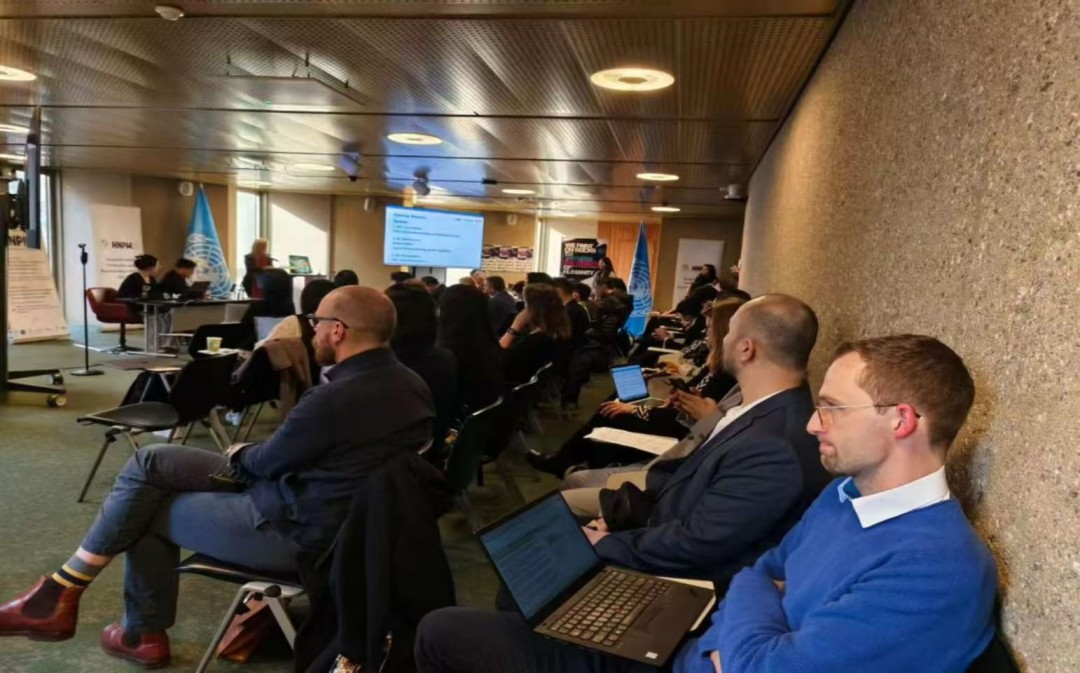
At 4:00 p.m. local time on March 24th, Peaceland Foundation and Global Youth Philanthropy (GYP) jointly hosted the themed side event "Catalyst for Change: Multilateral Cooperation to Drive Humanitarian Innovation." The event was opened with speeches by Ms. Anja Nitzsche, the Chief of the Cooperation and Resource Mobilization Branch of the United Nations Office for the Coordination of Humanitarian Affairs (OCHA), Mr. Giuseppe Saba, the founder of Dubai Humanitarian, Ms. Lauren Phillips, the representative of the United Nations Volunteers (UNV), and Ms. Mariangela, the Director of Peaceland Foundation in Geneva. They called on all sectors to actively engage in diverse cooperation and jointly promote the innovative development of humanitarian actions.
Subsequently, Professor Xu Tang, the Senior Scientific Advisor of the Integrated Research on Disaster Risk (IRDR) Program of the United Nations Office for Disaster Risk Reduction, delivered a keynote speech, emphasizing the importance of systematic collaboration in addressing complex humanitarian challenges. Ms. Lili Qiu, the founder of Peaceland Foundation, introduced the foundation's efforts in humanitarian disaster response and building partnerships, and called on all parties to actively participate in the diverse collaboration of global humanitarian development, break down inherent barriers, and promote the innovative development of humanitarian undertakings. Ms. Xiaoman Lin, the International Communication Director of Peaceland Foundation and the person in charge of the Global Innovation Program for the Supply Chain, pointed out that this program aims to give full play to the advantages of China's supply chain and provide more cost-effective, innovative, and sustainable solutions to the demand side in the humanitarian field.
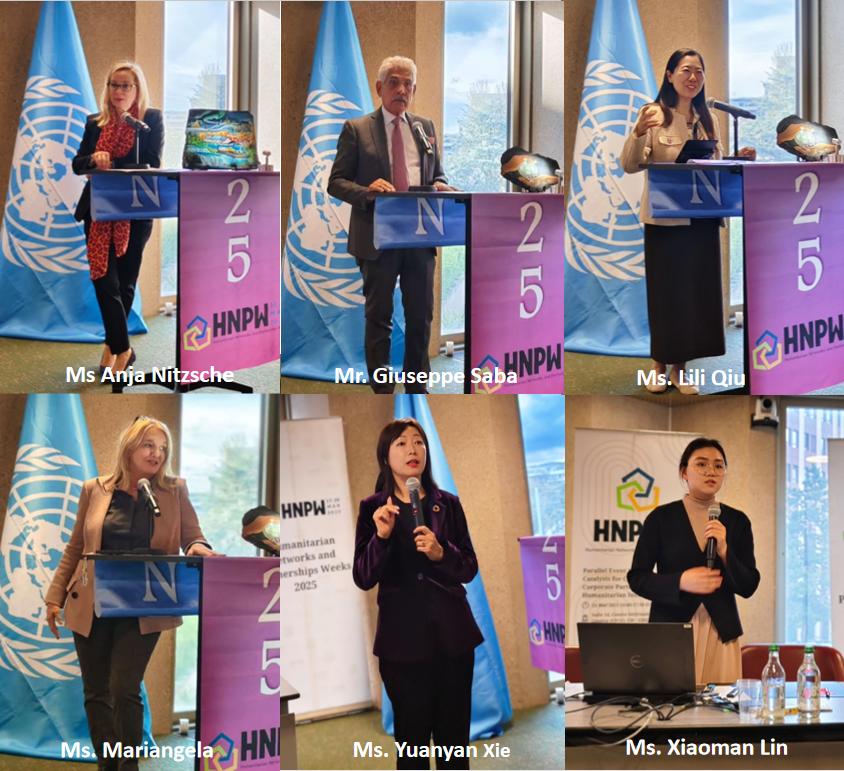
Then the second part of the side event, "Youth Perspective: Re-imagining the Future of Humanitarian Action," was jointly introduced with opening speeches by Ms. Yuanyan Xie, the founder of Global Youth Philanthropy, and the Canadian Rock Painting Art Association. Several young representatives expressed their views on shaping the future of humanitarian participation. A young representative from the United States shared her views on how the protection of world heritage can be regarded as a humanitarian mission. Ziyuan (Kitty) Sun, a young representative from Canada, discussed how to build a bridge of humanitarians through art. Osborne Song discussed the broad vision of enhancing the humanitarian capabilities of the next generation. Anrui Wang explored the relationship between humanitarians and the future of humanity from the starting point of carbon and silicon.
This side event focused on how corporate innovation and multilateral partnerships can drive impactful, scalable, and sustainable humanitarian solutions. Through in-depth sharing from multiple perspectives and inter-generational exchanges of ideas, the great potential of diverse collaboration in addressing global humanitarian challenges was demonstrated on the spot. In the future, Peaceland Foundation and Global Youth Philanthropy will continue to be committed to building an open and shared collaboration platform, linking enterprises, technology, youth, and humanitarian organizations, breaking down barriers together, and stimulating collaborative leadership, so that innovation and cooperation can truly become the key forces driving the progress of humanitarian undertakings.
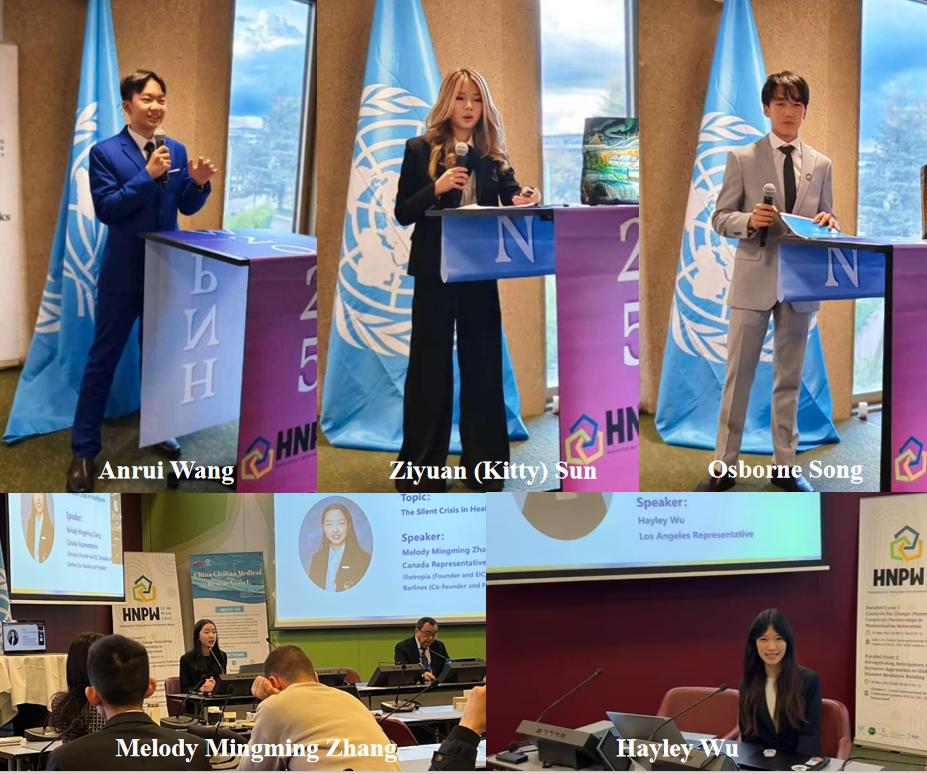
02 Multilateral Collaboration Drives Proactive Actions — New Paths for Global Disaster Resilience Building
At 9:00 a.m. on March 28th, the themed side event "Multilateral Collaboration Drives Proactive Actions — New Paths for Global Disaster Resilience Building" hosted by Peaceland Foundation and Global Youth Philanthropy opened. The opening session was presided over by Professor Qiang Zhang, and Ms. Lili Qiu, the founder of Peaceland Foundation, delivered an opening speech, sharing the multi-country humanitarian capacity building work of Peaceland Foundation, focusing on the emergency rescue and training activities carried out by Peaceland in regions such as Africa and Southeast Asia.
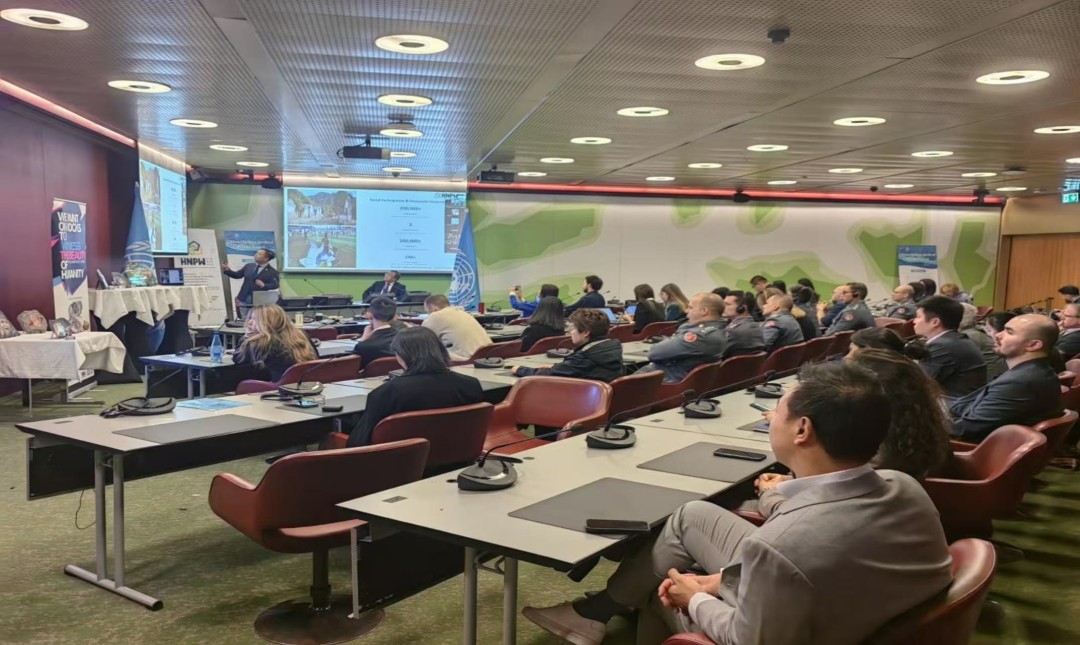
Afterwards, presided over by Professor Xu Tang, the Senior Scientific Advisor of the Integrated Research on Disaster Risk (IRDR) Program of the United Nations Office for Disaster Risk Reduction and the International Council for Science, the guests conducted in-depth discussions through keynote speeches on the successful practices and broad potential of multilateral collaboration and enhancing local capabilities in humanitarian undertakings.
Professor Qiang Zhang of Beijing Normal University delivered a keynote speech titled "Exploring an Integrated Path for Resilient Cities — Taking Beijing as an Example," proposing that urban resilience is not only the basis for the continuous survival of human beings but also an important opportunity to promote humanitarian innovation in the era of multiple crises. During the conference, an earthquake suddenly occurred in Myanmar. Ms. Tina Liu, the Head of International Development of Peaceland Foundation, connected from the office in Thailand to share the on-site situation and, taking Thailand as a case, introduced the foundation's exploration and experience in global emergency capacity building. Mr. Andrei Klopau from the technology company Kontur shared about disaster risk analysis. Through three practical cases, he emphasized the key role of databases and technological tools in improving risk early warning and disaster prevention and control. Finally, Candy Zhou, the person in charge of the Workers Without Borders organization, introduced the SWAB disaster relief model and shared its application experience in on-site rescue, providing valuable experience for promoting localized and diversified humanitarian responses.
Subsequently, Hayley Wu, a young representative from Los Angeles, discussed how inclusive forward-looking actions can proactively build a future with climate resilience. Melody Mingming Zhang, a young representative from Canada, shared the potential medical crisis discovered from the youth perspective. Mingze Li, a young representative from the University of Cambridge, shared the urban climate governance in the Lancang-Mekong River region and the urban disaster resistance capacity building in Shanghai.
The conference specially set up a roundtable forum. The on-site interactive guests included Mr. Paul Knox Clarke, the person in charge of the ADAPT Initiative, Mr. Ala Hassan, the Policy Advisor of the Department for Business, Energy and Industrial Strategy (BEIS) of the United Kingdom, and others. The participating experts focused on discussing how their respective institutions promoted their work through multilateral collaboration and partnership building in the context of tight funding, and discussed the relevant experience in dealing with extreme heat disasters, especially the strategies and practices in disaster preparedness.
Using Stones as a Medium to Convey Voices
During the conference, with the vision of promoting international exchanges and cooperation and jointly building world peace, the delegation of the "Canadian Rock Painting Art Association," a partner, was specially invited to attend the conference. Through careful preparation, some excellent rock painting works under the theme of "World Peace Painted on Stones" were brought to the conference venue for display. These rock painting works, which embody the painstaking efforts of the creators and their yearning for peace, use stones as a medium to convey voices. Through the power of art, they cross national boundaries, promote the spiritual communication among people of different cultural backgrounds, contribute to the building of world peace on the international stage, and become a vivid carrier for promoting the development of the global peace cause, helping countries around the world to jointly move towards a more peaceful and stable future.
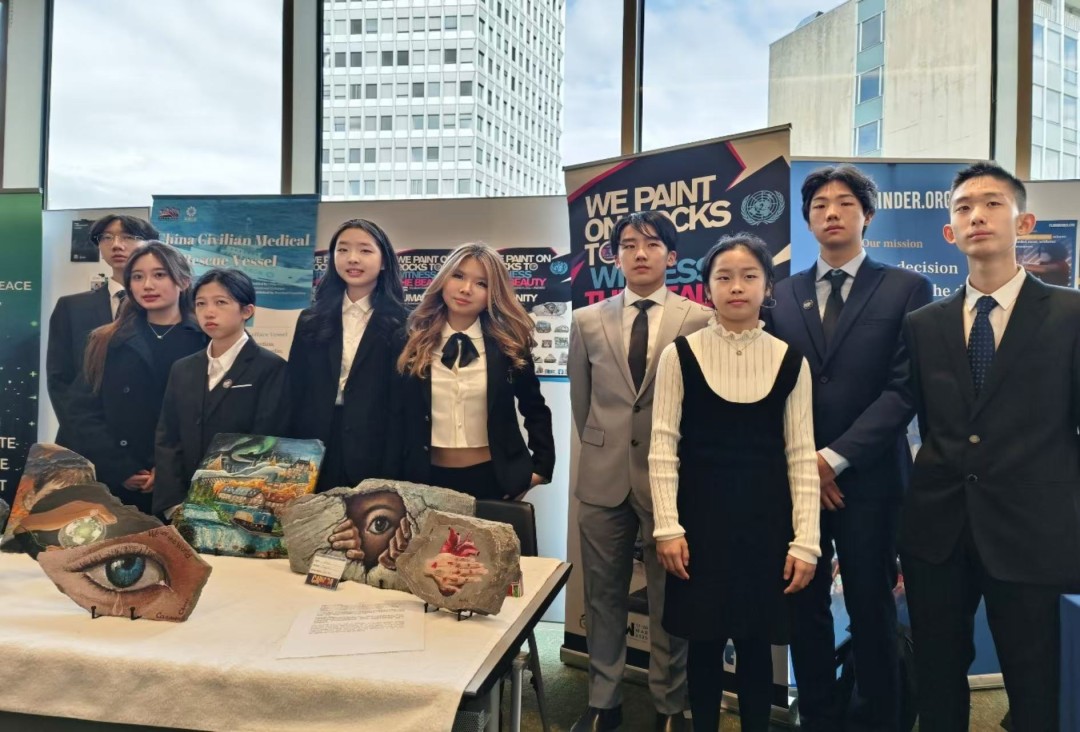
Partner Exchanges
During the conference, Peaceland Foundation and Global Youth Philanthropy actively carried out exchanges and cooperation with international partner institutions, such as the Permanent Mission of China to the United Nations Office at Geneva, the United Nations Office for the Coordination of Humanitarian Affairs (OCHA), the United Nations Office for Disaster Risk Reduction (UNDRR), the Division on Investment and Enterprise of the United Nations Conference on Trade and Development (UNCTAD DIAE), and Dubai Humanitarian. They shared the multilateral collaboration practices based on China's experience and advocated cross-sectoral and cross-disciplinary innovative cooperation. The relevant discussions covered a wide range of topics, from strengthening the participation of the private sector and promoting youth participation to empowering the supply chain through cross-border platforms and in-depth discussions on local capacity building and the development of resilient cities, comprehensively demonstrating the huge potential of new types of partnerships in global humanitarian actions.
Joint Innovation to Build a Resilient Future Together — HNPW 2025 Successfully Concluded
During this HNPW 2025, Peaceland Foundation, in collaboration with Global Youth Philanthropy, deeply participated in the exchanges and practices of global humanitarian issues around the three key words of "multilateral cooperation," "technological empowerment," and "capacity building." Through the successful hosting of two themed side events and in-depth dialogues with United Nations agencies and multilateral partners, they not only shared China's experience but also promoted the joint construction of the global humanitarian cooperation system through active exchanges with international partners. Whether it is from disaster early warning to rapid response, or from capacity building to sustainable development, they have always been committed to building a humanitarian bridge connecting China and the world, and promoting the formation of a more open, inclusive, and effective cooperation ecosystem.
Besides, as a partner of Peaceland Foundation, Global Youth Philanthropy actively responds to the United Nations' "Youth 2030" strategy, takes "uniting the power of young people around the world and innovating global governance practices" as its mission, and actively leads young people to focus on the United Nations' sustainable development issues and carry out various public welfare innovation actions. Among them, in the humanitarian field, it empowers young people to promote global disaster response and sustainable development through technology and inter-generational cooperation, demonstrating the responsibility and strength of the younger generation.
In an era full of challenges and hopes, we need to work together more than ever. With innovation as the driving force and cooperation as the cornerstone, we can jointly build a more resilient and compassionate humanitarian future.
Media Contact
Company Name: Global Youth Philanthropy
Contact Person: Liping Sun
Email: Send Email
Country: China
Website: http://www.youth-global.org/

